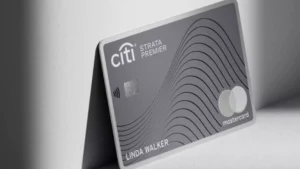With every new announcement from the Federal Reserve, the spotlight turns to Wall Street. But the truth is, the most immediate impact isn’t on the stock exchange — it’s on your bank account, your credit card bill, your mortgage balance, and even your chances of financing a new car.
President Trump’s frequently shifting stance on tariffs, along with the broader effects of his restrictive immigration policies and sweeping federal job cuts, has made forecasting a challenge.
“Until policymakers have some clarity on these policies,” said Mark Zandi, chief economist at Moody’s Analytics in a statement, “they won’t know what the appropriate monetary policy response is, and have thus paused any further interest rate cuts.”
Understanding the Fed’s basic interest rate is like having a map of what could happen to your money in the coming months. And even if the term “monetary policy” feels distant, it directly affects how you spend, invest, save, and plan your financial life.
So what exactly is the Fed rate?
The Federal Reserve’s interest rate, also known as the Federal Funds Rate, is the cost of money for banks. It determines how much financial institutions pay to borrow from one another and serves as the foundation for all other interest rates in the economy.
When the Fed raises this rate, credit becomes more expensive. In other words: you pay more interest on loans and credit cards. When it lowers the rate, money becomes cheaper, which tends to stimulate the economy, encourage spending, and even boost investments.
But, as with almost everything in economics, there’s no magic trick. Lowering the rate too much can fuel inflation. Raising it too high can slow down growth. The Fed walks a tightrope — and you feel every step in your bank statement.
Car Financing: The Dealership Door Challenge

If you’re thinking about buying a car, know that auto loan rates have been trending upward, and car prices remain high, making affordability a challenge — even before American tariffs threaten to push prices even higher.
Auto loans tend to track the Fed’s decisions, making it one of the main factors behind monthly payment amounts. However, other variables also determine the final amount borrowers pay, including your credit history, vehicle type, loan term, and down payment.
The average interest rate on new car loans was 7.3% in May, according to Edmunds, a car shopping website — slightly above April and unchanged from 2024. For used cars, the rates were higher: the average loan carried an 11% rate in May, nearly unchanged from April and slightly below the 11.5% seen in May 2024.
| Month | Average APR – Used Vehicles | Average APR – New Vehicles | % Change from Previous Month |
| December | 10.8% | 6.6% | — |
| January | 11% | 7.1% | +0.30% (used) / +0.50% (new) |
| February | 11.3% | 7.2% | +0.30% (used) / +0.10% (new) |
| March | 11.5% | 7.2% | +0.20% (used) / 0.00% (new) |
| April | 10.9% | 7.1% | -0.60% (used) / -0.10% (new) |
| May | 11% | 7.3% | +0.10% (used) / +0.20% (new) |
Practical Tip: once you’ve set your budget, get pre-approved for an auto loan from a credit union or bank (Capital One and Ally are two of the largest auto lenders) to use as a benchmark for comparing dealer financing, should you go that route.
Always negotiate the car’s total price (including all fees), not the monthly payment, which can obscure the loan’s terms and the total amount you’ll pay over time.
Credit Cards: The Invisible Interest Draining Your Budget

Credit cards are the first to respond to Fed moves. And since most Americans carry a balance month to month, even small rate changes can amount to hundreds of dollars annually.
The interest rates you pay on any existing balance have dipped slightly following the Fed’s most recent cuts, but the declines have slowed, experts say. Last week, the average credit card interest rate was 20.12%, according to Bankrate.
| Date | National Weekly Average APR |
| 06/25/2025 | 20.15% |
| 06/18/2025 | 20.12% |
| 06/11/2025 | 20.12% |
| 06/04/2025 | 20.12% |
| 05/28/2025 | 20.12% |
| 05/21/2025 | 20.12% |
| 05/14/2025 | 20.12% |
| 05/07/2025 | 20.12% |
| 04/30/2025 | 20.12% |
| 04/23/2025 | 20.09% |
| 04/16/2025 | 20.09% |
| 04/09/2025 | 20.09% |
| 04/02/2025 | 20.09% |
| 03/26/2025 | 20.09% |
| 03/19/2025 | 20.09% |
| 03/12/2025 | 20.09% |
| 03/05/2025 | 20.09% |
| 02/27/2025 | 20.09% |
| 02/19/2025 | 20.09% |
Tip: contact your bank and negotiate for better rates, especially if you have a strong credit history. Also consider looking into smaller credit unions that may offer more favorable deals. Many require you to live or work in a specific area, but some larger ones have more flexible rules.
Switching institutions can also make sense. And if you do transfer a balance, keep an eye on fees and the potential interest hike after the introductory period ends.
If you have any doubts about which card or institution to choose, here is my suggested reading!
Mortgages: When Every Percentage Point Becomes a Decades-Long Debt

Mortgage rates have fluctuated significantly over the past year, reflecting both Federal Reserve policy and overall market sentiment. After peaking around 7.8% at the end of 2024, rates declined to 6.08% by the end of September.
However, with expansionary fiscal rhetoric from Donald Trump’s campaign and the persistence of strong economic data, rates edged up again, settling at around 6.84% in June 2025.
It’s crucial to note that the 30-year fixed mortgage rate — the most common option for American buyers — doesn’t move directly with the Fed’s rate, but instead follows the yield on 10-year Treasury bonds. These are influenced by inflation expectations, central bank actions, and investor sentiment.
Besides fixed-rate mortgages, other products like home equity lines of credit (HELOCs) and adjustable-rate mortgages (ARMs) are more sensitive to Fed decisions and typically adjust within one or two billing cycles following a rate change.
If you’re in the market for a home loan, it’s best to gather multiple quotes on the same day, as rates can shift quickly. Compare not just the nominal rate, but also discount points (payments to lower your interest rate) and all associated fees.
Tip: the best way to understand your total loan cost is to look at the APR (Annual Percentage Rate), which consolidates these factors. Don’t forget to ask the lender what exactly is included in the APR to ensure a fair comparison.
What About Students and Their Families?

Not all the news is bad. For the first time in five years, federal student loan interest rates are set to decrease — welcome relief for students and families amid rising education costs.
Starting July 1, undergraduate loans will carry a fixed rate of 6.39%, slightly down from the current 6.53%. Graduate and professional loans will drop from 8.08% to 7.94%, while PLUS loans, which provide supplemental funding for graduate students and parents, will fall from 9.08% to 8.94%.
These rates are reset annually based on the May auction of 10-year Treasury bonds and remain fixed for the life of the loan.
In the private sector, things are more unpredictable. Private student loan rates can vary by as much as 15 percentage points between lenders. In these cases, the borrower’s (or co-signer’s) credit score heavily influences the loan terms. With few traditional banks in this space, finding good rates requires solid research and a close eye on fine print. Always analyze whether the rate is fixed or variable and what additional charges might be built into the total loan cost.
What to Expect Moving Forward
Although interest rate cuts have begun, the Fed is expected to move cautiously. Inflation still looms, and political and fiscal uncertainties remain on the horizon.
The key? Stay informed, adjust your spending and investment decisions according to market signals, and never take on debt assuming that “rates will drop soon.”







